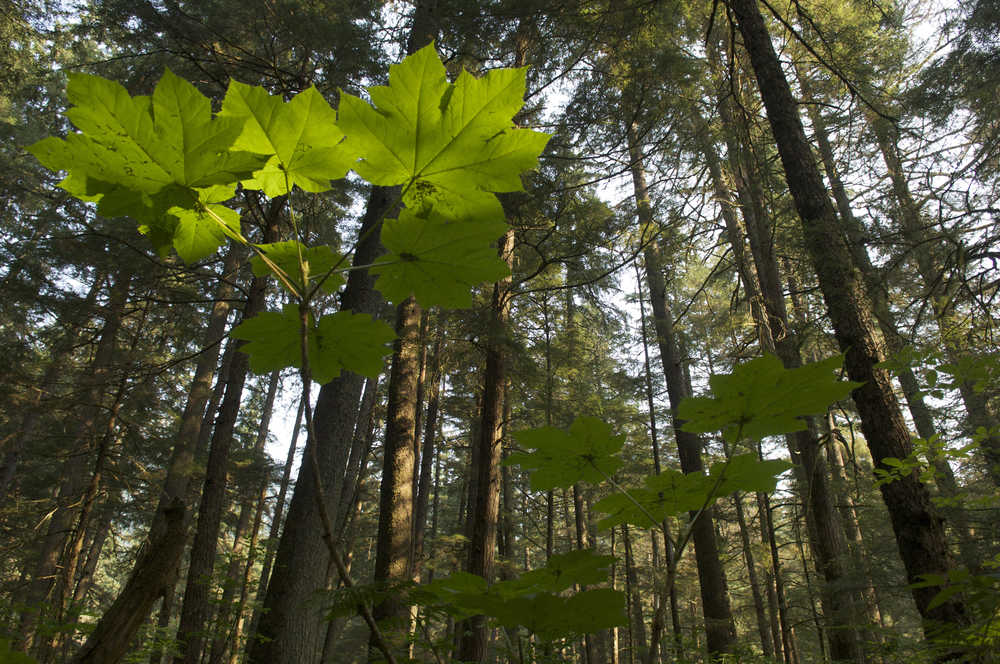JUNEAU — Plans for managing the nation’s largest national forest call for changes in timber harvests that one critic says will be “the demise of the timber industry as we know it right now.”
The Tongass National Forest released a management plan update Friday that it says will emphasize young-growth timber sales in the forest, which covers much of southeast Alaska, and allow for a logging rate that it says will meet projected timber demand.
This stems from a 2013 memo from U.S. Agriculture Secretary Tom Vilsack, directing Tongass managers to speed the transition from old-growth harvests toward a wood-products industry that mainly uses young-growth timber. The move was to be done in a way that preserves a viable timber industry. The transition goal was 10 years to 15 years, compared to the prior target of 32 years.
The decision released Friday calls for a full transition in 16 years and expects most timber sold by the Tongass to be young growth in 10-15 years.
Much of the wildlife found in the forest is linked to or at least partially reliant on old-growth forest, including a major brown bear population, high densities of breeding bald eagles, the Alexander Archipelago wolf and species important for subsistence, according to a Tongass decision document.
The supervisor of the Tongass, M. Earl Stewart, told reporters Friday that the Forest Service is working with the state on a young-growth inventory. He said the agency also is evaluating a potential study to determine the type, volume and quality of products that can be made with young-growth Sitka spruce and western hemlock growing in southeast Alaska.
Harvests will be monitored to see if any changes will need to be made, he said.
Stewart’s decision is based on recommendations from an advisory group that included representatives from conservation groups, the timber industry, Alaska Native groups and federal, state and local governments, he said.
The update is to take effect in 30 days. Asked if this could be changed by the incoming Donald Trump administration, Stewart read a statement from the Washington, D.C. office. It said in part that the Forest Service is working to ensure a smooth transition and that its employees will remain focused on their missions.
Shelly Wright, executive director of the Southeast Conference, a regional economic development group, expressed concern with the plan.
“I think that it will be the demise of the timber industry as we know it right now,” she said.
One mid-sized mill remains in southeast Alaska, but it’s built for larger logs and would have to invest millions of dollars if it wants to move to smaller logs, she said. There are smaller mills that do specialty work but only need a couple trees a year, she said.
“The opinion of people that believe in resource development is that trees grow. Trees grow back,” she said. “There will always be mature timber because trees grow, and if you let them grow to a mature size, then we’ll have mature timber.”
In a release, Mark Kaelke, southeast Alaska project director for Trout Unlimited, noted protections for an area that his group says includes the forest’s most important and productive wild salmon areas.
Kristen Miller, conservation director with the Alaska Wilderness League, offered praise while noting her group wants a speedier transition to young-growth harvest.
The region’s economy “is built on sustainable fisheries and wild places that draw visitors from around the world,” she said in a release, adding that it’s time for Forest Service management “to look beyond logging.”

